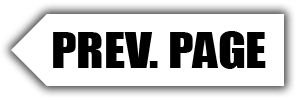Bill Word recalled that: “We got the feeling that those NHRA guys and the California racers just didn’t like us, and they sure didn’t take us seriously. The first day of time trials the officials wouldn’t give us a time slip. We knew we were making really good runs, but we were lost without knowing how to tune it based on the ET and mph numbers. The next day Pete and I went to the D-A Speed Sport timing tower, to speak with Wally Parks. The guard stopped us and asked who we were and what we wanted. I told him Pete was the driver and I was half-owner of the car, and we needed to get a time slip so we could tune the car for eliminations. Turned out they (NHRA officials) didn’t believe we could go as quick and fast as we were running. They thought maybe we were jumping over the lights or doing something illegal with the car. They finally relented and sent out an NHRA official who told us; “Leave it alone”. He knew that we were running considerably quicker than anyone else there, and after that they started giving us time slips. We went back to the pits, got the car ready and put it back in line to run. We made another run and this time they announced our time, an 8.52, the quickest run of the meet! I guess they thought a couple of Georgia boys couldn’t possibly run faster than all those big-name guys who grew up racing out in California.”
“It took a while, but pretty soon all the dragster guys started coming by our pit to take a look at our simple little, ‘plain vanilla’ Chevy car. Pete and I were both fairly quiet guys and we didn’t make a lot of noise. We we’re feeling pretty good about how the car was running, and we just waited for the call for AA/Dragster class eliminations to start on Sunday.”
Ironically, it was one of the innovations they brought with them that fed the disbelief in the performance they displayed. A simple water-injection system had been plumbed into the Hilborn injector, to control detonation caused by the engine’s high compression ratio. Several competitors raised a stink with NHRA’s tech inspectors, suggesting that the water injection was the reason for the amazing numbers. They thought the water injection was also injecting some sort of illegal additive to the pump gasoline fuel. However, the Georgia car passed NHRA’s strict fuel check every time it ran. No matter, NHRA insisted they remove the water injection, and they did. After they further dialed-in their engine tuning the car ran even quicker! Although there no further challenges to the car’s legality, Bill Word remembered that the NHRA tech inspectors always looked at them extra-carefully.
The late Bill Smith, NHRA’s Division 2 Tech Director from Miami had seen the car in action at several earlier ’61 events, including the points meet that the pair had won at Covington, Georgia. Smith’s knowledge of Pete and Bill’s capabilities left him with no reason to doubt that they were perfectly legal and were fully capable of running the numbers they were posting
Bill Word reflected: “We were just trying to prevent the engine from detonating and hurting itself. We only had the one engine, and it was in the car. If we blew it up we had to go home. The high compression ratio could get you into trouble quickly unless you were very careful with jetting and spark advance. These things were even more critical when the weather was hot. That year at the Nationals it was very hot and humid. We were used to running in those conditions back home, so heat and humidity didn’t bother us much”.
In 1961 NHRA rules called for all the AA/Dragsters to run each other for the “AA/D Class Trophy”. When the class winner was declared he sat out and ran the winner of the final day’s eliminations for the overall Top Eliminator award. The Nationals finals were and still are held on Monday, Labor Day. The surprising Atlanta racers met and defeated all challengers in Sunday’s AA/D class run-off’s, and they were ready to face the remaining TE racers for the overall Top Eliminator honors.
During Sunday’s AA/D class, Pete Robinson churned out the event’s overall Low Elapsed Time, a stunning 8.44 seconds, several tenth’s quicker than the entire AA/D field. Surprisingly, NHRA’s officials still refused to recognize the 8.44, saying it came “unofficially”, during class runs. NHRA did finally allow Pete’s 8.68 second time, also during AA/D class eliminations, as the official Low ET for the event. The twin-Chevy Dragmaster Two-Thing was credited with Top Speed at 177.87 mph with Jim Nelson’s Dragmaster partner Dode Martin driving.
The 1961 Nationals field was chocked-full of big-name drivers such as Tom McEwen, Eddie Hill, Jim Nelson, Phil Hobbs, Jack Moss, Joe Shubeck, Joe Jacono, John Hellis, Connie Kalitta and Don Westerdale, all well-known winners from across the USA.


